The Effect of Light on Shore Organisms
Our treatment needs to consider TWO essential light effects, those on photosynthesisers (Algae and Lichens) and those on animal behavior.
Although no intertidal organisms in the UK are plants (except Eel Grass, Zostera), they DO require light to make food in the process of photosynthesis.
As you go deeper into water, it gets darker!! Depending on how free of suspended matter the water is, you can dive to about 100m before it gets TOTALLY dark. The clarity of the water is measured using a device called a Secchi Disk:
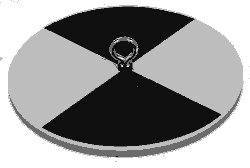
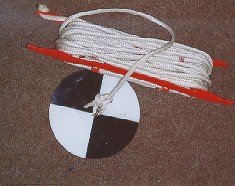 more about this here
more about this here
Thus, there are no plants, or any other kind of photosynthesisers on most of the seabed, there is simply no light. Where does the food and energy here come from? Well, dead things fall, and in some cases there are CHEMOAUTOTROPHS.
BUT, for our Intertidal study, we are interested in how light changes as we go down the beach, because, when the tide is in, water will be absorbing some wavelengths but NOT others and photosynthesis, as you will probably know from your basic Biology, needs light. BUT, some wavelengths (Colours) are better than others for it. Like this:
 (Click
on the picture for more details at the site where it came from)
(Click
on the picture for more details at the site where it came from)
The other thing you need to know is the way WATER AFFECTS LIGHT. It absorbs weakly in the BLUE and the GREEN. This is shown here:
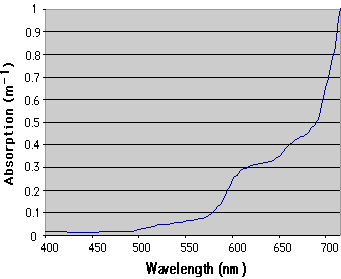 (Click on the picture for more details at the web
site where it came from)
(Click on the picture for more details at the web
site where it came from)
What does this mean?
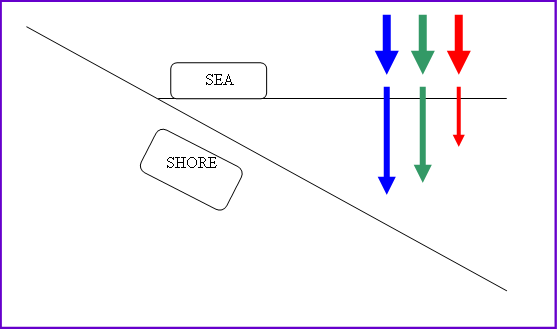
Above you can see a brief summary. At depth (a few metres in most situations) the predominant light is blue, the best colour to be here is RED as red absorbs blue. Hence red algae.
As we all know, land (terrestrial) photosynthesisers are GREEN. At the bottom of the shore, where green light is rare and red even rarer they are RED, the so-called RED ALGAE. So the Green-Brown-Red sequence we see as we go down a beach is a reflection of the wavelengths of light available when the tide is in, at each level on that beach.
So the distribution of algae on a rocky shore is (VERY roughly) like this:
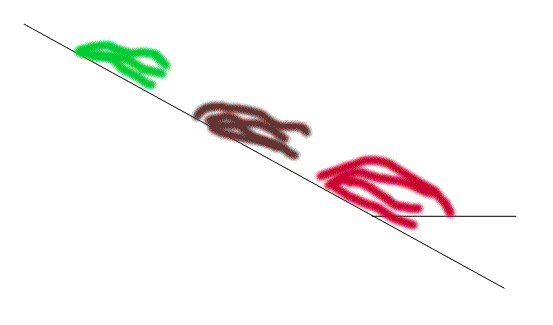
Light and Animal Behaviour on the Shore
The way in which light affects animals is mainly due to its involvement in the behaviour of animals which are displaced from their 'correct' zone, or returning to this zone from feeding excursion.
The upper shore litorrinid Melaraphe neritoides provide an interesting example. It seems to be mainly responsive to gravity and light, but in a rather complex way. The interaction of these two factors, and how they ensure Melaraphe finds its zone, are summarised in the diagram below:
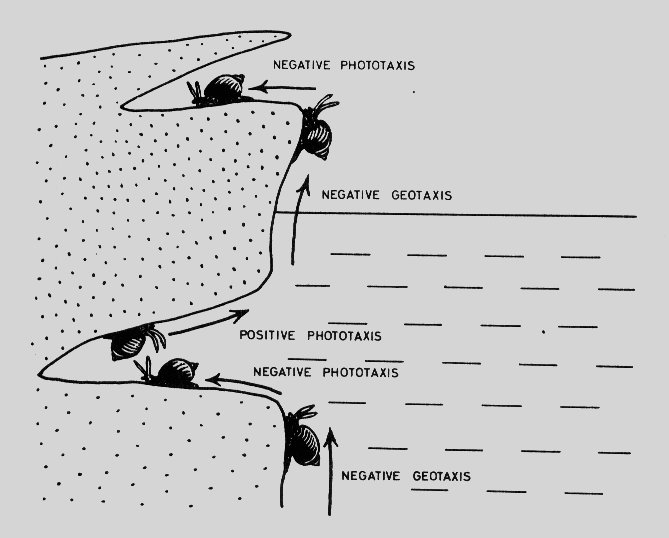
(Taken from Newell, R.C., The Biology of Intertidal Animals, American Elsevier, 1969)
Laboratory evidence exists for the changes in geo- and phototaxies shown in this picture.
As mentioned, a large body of work exist on these aspects and you are referred to the literature for more details.